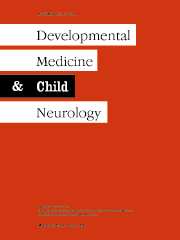Article contents
Assessment of upper-limb function and movement in children with cerebral palsy wearing lycra garments
Published online by Cambridge University Press: 12 June 2001
Abstract
It has recently been suggested that lycra garments are helpful for children with cerebral palsy (CP). Twelve children, with athetosis, ataxia, and spasticity, were fitted with lycra garments (Kendall-Camp UK Ltd). Scores on the Paediatric Evaluation of Disability Inventory (PEDI) scales were determined before and after wearing the garment for at least 6 hours a day for 6 weeks. Five children with motor problems representative of the whole group were investigated during a reach-and-grasp task by kinematic motion analysis; reflective markers were used with and without the garment. Carers were given a questionnaire concerning the practicalities of using the garments. All 12 children made improvements in at least one of the functional scales of the PEDI, and scores for the whole group showed significant gains (Wilcoxon χ2 test, self-help p<0.01; mobility p<0.5; social p<0.1). These changes were usually slight, although noticed by carers. Six children made gains of at least one scale of the caregiver assistance scores, two of the children showed losses (due to difficulties removing the garment for toileting), and four showed no change. Motion analysis indicated that (1) two children with athetosis had improved proximal stability in sitting and in smoothness of arm movements, (2) one child with ataxia had improved in proximal and distal stability, and (3) two children with spasticity had more jerky movements, although one improved in proximal stability. All children had problems in wearing the garments, including problems with toileting and incontinence of urine; the parents of only one child wanted to continue using it. Results suggest that the functional benefit of lycra garments for children with CP is mainly due to improvements in proximal stability but this should be weighed against the inconvenience and loss of independence.
Information
- Type
- Original Articles
- Information
- Copyright
- © 2001 Mac Keith Press
- 62
- Cited by

